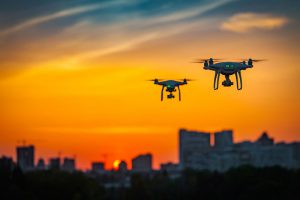 The supply chain digital twin is more than just a concept
The supply chain digital twin is more than just a concept
TW Special Report
According to a Gartner survey, 13 per cent of organizations implementing Internet of Things (IoT) projects use digital twins, while 62 per cent are either in the process of establishing digital twin use or plan to do so. With several companies delving into the digitalization world, Claudia Jarrett, US country manager of EU Automation, explains why the supply chain digital twin is more than just a concept.
In the past, supply chains operated on strategies where manufacturers produced goods, which were pushed down the supply channel. This created gaps between supply and demand and inevitably led to poor inventory control, with instances of inventory shortage and waste.
Now, a digital version of the supply chain can be created. Involving strategically unified computing environments and technologies of industry 4.0, a digital supply chain moves assets, people and resources to where they are needed. By passing data through cloud servers and databases, the collection of information in the supply chain enhances several manufacturing practices.
For instance, manufacturers can carry out stress tests on its supply chain. Users can efficiently administer stresses and measure responses — by pairing stress parameters with response readings. A digital twin can help translate a company’s stresses into a quantified view of real consequences, such as the outcome of supplier delays.
Supply Chain Digital Twin
So, what is a supply chain digital twin? It represents a digital depiction of an organization’s actual supply chain. Its model uses prescriptive analytics, which gathers data from both descriptive and predictive sources to find the best course of action in any scenario, before applying it to the decision-making process.
Despite prescriptive models working with real data, a supply chain digital twin takes this capability further as inputs are fed into the model in real time. For instance, as a customer’s order is processed, the order and associated transactions are automatically fed into the digital twin.
To fully reflect the real world, however, other inputs that impact the supply chain are also considered. For example, if production machinery goes down or a supply shipment is late, information is sent to the digital twin through IoT devices, like sensors. Once data is collated, the digital twin determines the right corrective action and supports supply chain optimization.
Predictive Maintenance
The performance of machinery in the supply chain process is crucial. Machinery that breaks down regularly has a detrimental impact, especially when downtime needs to be avoided at all costs.
U.S.-based startup Datumix provides a virtual 3D simulation of the required equipment. It combines machine learning to develop a digital twin used to monitor the performance of equipment, before installing the algorithm in real-time. Data derived from the 3D model, coupled with artificial intelligence (AI), is then used for the maintenance of equipment.
Implementing predictive AI algorithms allows plant managers to apply predictive strategies to its supply chain. By detecting failure patterns and anomalies, learning from those patterns and then predicting future failures of machine components, manufacturers can replace equipment before it fails.
Deploying Digitalization
However, to optimize performance, the digital twin should reflect any limitations and accommodate compromises of its physical supply chain.
Modeling and prescriptive analytics are a core component of a supply chain digital twin and should involve problem-solving programming languages, such as the fifth-generation programming languages (5GL). This essential software ensures operators receive detailed insights and visibility on the supply chain, its structure and formulae to optimize the decision-making process.
For instance, Fleetpride, a U.S.-based firm that sell parts and provide services for heavy-duty trucks and trailers, built a model that uses historical shipping data to predict the shipping orders per warehouse by day, week and month. By applying decision optimization to its model, corrective action could be determined when dealing with customers, staff and even inventory placement on any given day.
In fact, Fleetpride uses prescriptive analytics to transform data and predictive solutions into real, fact-based courses of action. No longer reliant on intuition, Fleetpride utilizes advanced analytics, statistical modeling and a decision engine to solve business planning, scheduling, pricing and inventory challenges, and other businesses have the opportunity to do the same.
Internet Of Things
The idea of a digital twin isn’t new, but what is different is the concept of integrating data and inputs from the real world. IoT-connected devices are the building blocks of a digital twin, and sensor integration is key to enabling such visibility.
However, designing and integrating these sensors can be resource-intensive and time-consuming, and can even be difficult to stream data from older machines that aren’t technologically compatible. That’s why industry experts, such as obsolete parts supplier EU Automation, can supply sensors for manufacturers building a digital representation of its physical supply chain.
A digital twin is more than just a concept. Several companies are delving into the digitalization world, and although replicating what-if scenarios before physical implementation might sound like a pipe dream, digital twins are proving tangible and useful.
August 13, 2020




